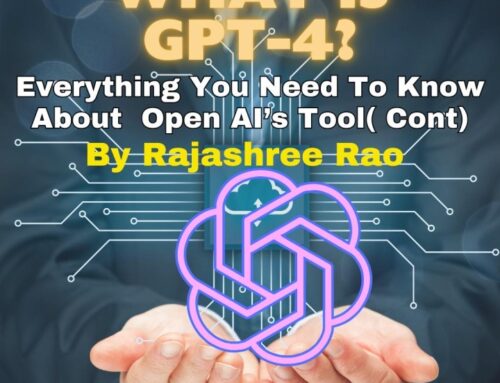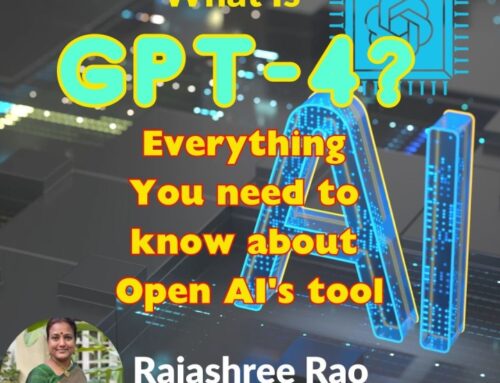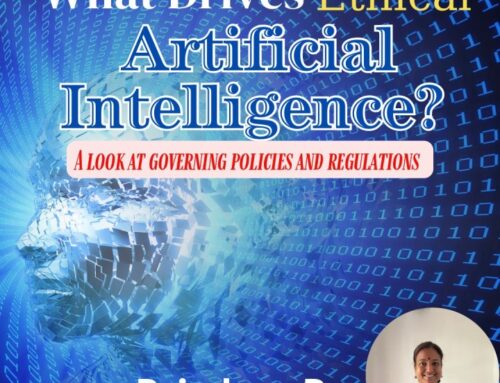Artificial Intelligence (AI) is the futuristic technological frontier that has made a phenomenal transformation over which the companies and nations are vying for control. AI may be the most significant social and economic shift of the last hundred years. The changes that are coming in various industries enabled with AI are just the tip of the iceberg. What is yet to come is nothing short of an unimaginable development which the world will be witnessing.
The AI evolution is already impacting the entire economy since they will eventually become an integral part of many aspects of our lives in a meaningful and genuinely ubiquitous way. AI has far more opportunities and advances for growth even though at the moment there are jobs which have been replaced through automation, while it has also led to a lot of job creations. Though there might be short-term disruption, the long-term potential is enormous and quite strong.
The mass distribution of internet and connected devices together with the advancements in cloud computing, data analytics and software algorithms has paved the wave for AI to hit the mainstream like never before. Let us see how it happens as the development of AI will be the story of the new era and coming generations.
1. Smart Virtual Assistant:
Everyone will soon be having a virtual assistant that is going to be very smart. These Personal AI Assistants are getting smarter by the day and will have the ability to learn more about your daily routines. You can imagine the day when you will no longer have to be worrying about buying food for dinner or lunch. Your AI will know what exactly you like, when and what you would like to cook at home and ensure that when you are back from work, all the groceries are shopped and ready to cook the meal that you want to eat. Google recently launched its voice-controlled smart assistant. Google Assistant can now hold human-like conversations with people over the phone. The assistant is assisting you to get your things done for you in the background and even calling your near and dear ones to give updates about your well-being.
2. Smart Connected Devices:
The popularity of the voice-based personal assistants among users the technology providers are embedding the software across a wide range of products and devices, right from TVs to lamps to Cars and beyond. Besides, many people have started to install smart speakers in their homes which means a large percentage of personal voice assistant users will have access to multiple voice assistants simultaneously and across various platforms too. Google Assistant went head to head with Amazon Alexa, and Apple announced the development of a competing model called HomePod. Each of these products has increased consumer familiarity with conversational interfaces powered by Artificial Intelligence. However, it might hit a potential roadblock if every vendor starts enabling people to customise the assistants to begin listening to each other and all your voice-based gadgets will work together and may get confused. A lot more work has to be done in this space by building a single, standardised, and interoperable platform.
3. Facial Recognition Authentication:
Your face will be your new driver’s license or the credit card or the barcode. We envisioned this a few years ago where I would be my own Authentication using one of the biometrics, and your face would be the most secure form of authenticating. Seeing how the technology and retail are merging, like Amazon with Whole Foods, I see a future where the consumers no longer will stand in the queue at the store.
Many of us don’t like the idea of some stranger finding out who we are, based only on an online photo of us. Thanks to the facial recognition systems used by social media sites, however, such a thing is becoming increasingly possible. Scientists recently decided to do something about it, by turning a couple of artificial intelligence (AI) systems against one another.
At the University of Toronto, “Prof. Parham Aarabi and grad student Avishek Bose started by designing two AI-based neural networks. One of these used the same techniques as existing facial recognition systems, to identify people in photos. The other network sought to thwart the first one, by slightly altering the aspects of those photos that were being used to determine the people.”
“The disruptive AI can ‘attack’ what the neural net for the face detection is looking for,” says Bose. “If the detection AI is looking for the corner of the eyes, for example, it adjusts the corner of the eyes, so they’re less noticeable. It creates very subtle disturbances in the photo, but to the detector, they’re significant enough to fool the system.”
The two networks went back and forth for a while, each one learning what the other was doing and trying to compensate for it. What ultimately resulted was an algorithm that could be applied to photos of faces, making them nearly facial recognition-proof yet still recognisable to people who knew them. It is hoped that the algorithm could be integrated into a publicly-available website or apps, which people who are concerned about their data security and privacy could use to treat their photos before posting them. The disruption in the AI technological advancements is incredible.
4. Artificial Intelligence will be technology everyone wants to talk about:
As the AI permeates the enterprises, everyone right from the CEO to CTO to the business unit leaders to everyone will need to become conversant in the AI technology. Speaking the same basic terminology will get the organisation on the same page and will help demystify AI’s role in the enterprise and what it means for the future business growth by redefining the processes.
5. Artificial Intelligence to Automate Journalism:
AI in news media is used for speeding up research to cross-referencing data and beyond. AI helps in streamlining of media workflows, automating mundane tasks, crunching more data, digging out media insights, eliminating fake news, generating outputs enabling the journalists to focus on what they do best for achieving highest efficiency and productivity. AI applications have been adopted by New York Times, Guardian, Reuters and other Media Giants.
6. Computers and Machines would become empathetic:
The advancements in AI is beginning to enable a more contextual form of computing with some of the devices especially the smart speakers and smartphones. Going beyond just a simple question and single discrete answer to everyday interactions, you should start seeing more human-like conversation and responses to the requests and queries. Multiple conversations, comprehensive responses, appropriate and insightful suggestions based on what we are trying to do or doing will give you the sense that the devices are becoming smarter by the day. Ironically, partly the way of this advancement is likely to happen by learning more about human behaviour and how they think which is essentially building a type of digital empathy.
7. Artificial Intelligence as a Service (AIaaS):
With the rapid developments in AI it is no surprise that AI is being integrated into the AI as-a-service business model. This business model makes resources such as software, infrastructure and platform readily available to the users via the internet on the cloud. It was only in the year 2017 that the Software-as-a-Service (SaaS) model matured, driven by Google, Salesforce and Microsoft. The as-a-service model is through cloud computing, but to handle an influx of demand for data, the cloud needs to get smarter. The providers have turned to deep learning, a subfield of machine learning to improve efficiency. The broader use of AI tools will happen through the adoption of Cloud Computing.
Combining the power of a portable neural network to a robot which is capable of skillfully navigating its surroundings will open up for a new world of possibilities for AI and human interactions. This is an example of how the research scientists can bring AI research to the next level.
To summarise, while we might be decades away from interacting with the artificial intelligence, intelligent robots, and machine learning has already found their way into our daily routines. Whether it is using handwriting or face recognition to protect our information, to tapping into the IoT to keep our homes secure and safe, or help engineers design and build more efficiently, the advancement of AI technologies is becoming pervasive.




